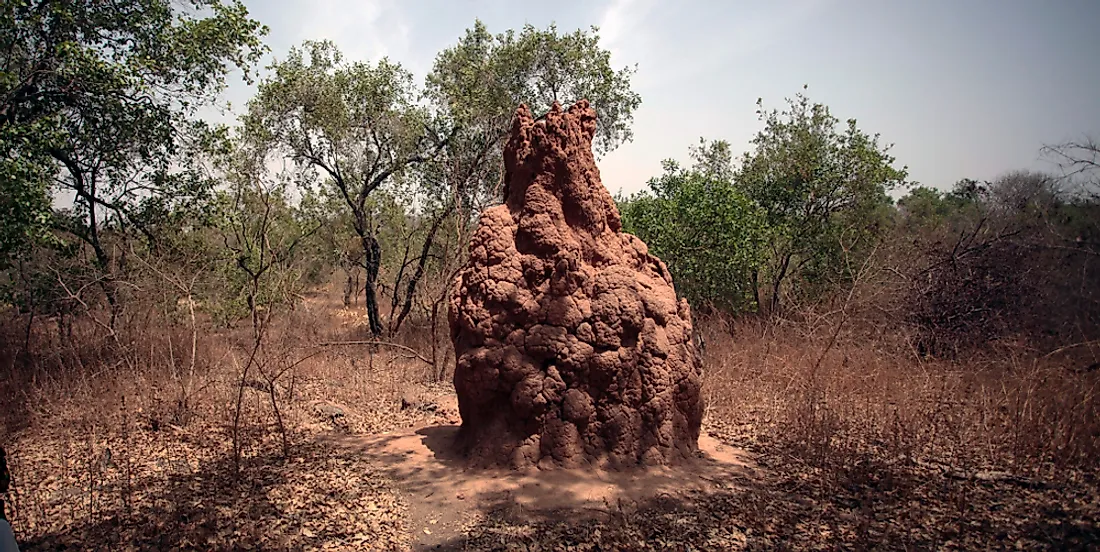What Role Do Termites Play In A Savanna Biome?

Termites are some of the most populous animals on earth and usually exceed mammals in biomass in most ecosystems. While the insects inhabit all of the earth’s continents except Antarctica, termites are found in huge numbers in the savanna where weather conditions are ideal for the establishment of their colonies. The effects termites have on the environment are arguably most profound in the savanna biome. Some flowering plants rely on termites for pollination. An example is the Rhizanthella gardneri, which is possibly the only flower whose pollination is only done by termites. Termites are one of the few animals which can break down cellulose from dead wood. Therefore, these insects play an integral role in the reintroduction of nutrients from the dead plants into the soil. Many termite species live in underground burrows which are great in aerating the soils.
Termite Mounds Offer Shelter To Many Organisms
Many termite species live in subterranean colonies while others build the nest which is perched on trees. Other species such as those of the Macrotermes genus build towering earth structures known as mounds where the colony resides. These earth structures vary in size with some exceptionally large mounds being over a dozen feet in height. One mound found in the Democratic Republic of Congo stands 42 feet in height making it the tallest mound on record. Many species of ants inhabit termite mounds and nests for protection against adverse weather conditions and predators. Some ant species even co-exist with resident termites in inhabited mounds, but most species prefer abandoned mounds. These nests and mounds also offer shelter to other organisms such as scorpions, lizards, snakes, millipedes, and beetles.
Termites Act As A Source Of Food
Termites are a popular food item for a range of different animal species. The savanna is home to specialist termite feeders such as the aardvark which consumes huge numbers of termites in one sitting. This insectivorous animal uses its long sticky tongue to penetrate inside termite mounds and fish out the termites. Termites are also fed on by other savanna vertebrates including frogs, lizards, bats, and many bird species. Some ant species subsist purely on termites including all species in the Megaponera genus. These ants raid termite colonies and carry dead termites back to their homes. Other ant species inhabit termite mounds where they frequently make predator attacks on the resident termites. Other insects which prey on termites include wasps, crickets, and cockroaches.
Tribal People Also Consume Termites
Termites are a popular food item for many tribes who reside in the savanna. The insects are an important protein source and can be eaten raw or when cooked. The alates are particularly popular in many Sub-Saharan Africa countries and are collected in their thousands for consumption. Research has established that termites are packed with proteins and fats which aid in improving the diets of people in malnutrition-prone areas. Termites are also believed to have medicinal benefits by savanna inhabitants. Some tribes believe the insects can heal a variety of health ailments including sinusitis, asthma, whooping cough, influenza, and treating wounds. Such claims are yet to be supported by scientific research.











